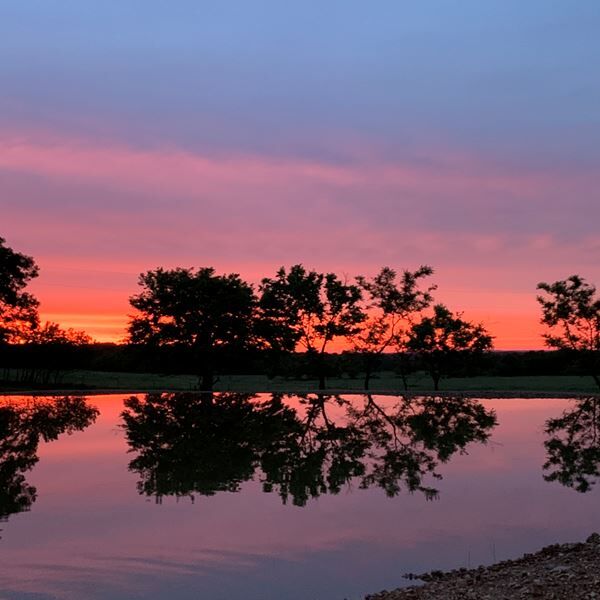In Gov. Laura Kelly’s assessment, Kansas has made strides in water stewardship but will need to continue seeking creative solutions with new research, technology and private partners to address quality and quantity needs.
The 10th Governor’s Conference on the Future of Water in Kansas was conducted in a virtual format Nov. 17 to 18. Kelly said there are many complexities with water management and concerns include drought, floods and at times both will occur in the same year. Climate extremes, preserving the Ogallala Aquifer and reservoir sedimentation remain important topics.
The state has made headway in the past decade with public partnerships and she believes that must continue.
“Water affects every part of our lives,” she said.
Several key points were made by presenters during the first day.
Doug Kluck, Central Region Climate Services director with the National Oceanic and Atmospheric Administration, said global temperatures have been trending upward since tracking began in the 19th century. In Kansas the temperature has generally increased 0.1 degree Fahrenheit per decade. In general the most warmth has occurred in the winter rather than the summer. One of his trend studies shows that precipitation has increased about 0.25 inches per decade but the bulk of it was in the spring, followed by summer.
However, it varies significantly in the central and eastern part of the state, particularly in southeast Kansas, which received the biggest increase at 0.49 inches. Conversely the northwest corner only registers about an 0.06-inch increase per decade.
“Less in the west and more in the east,” he said the report indicates.
Droughts will continue to be a part of the Kansas and High Plains story, and April through June will be when most natural disasters occur in the Sunflower State. Kluck said he expects moisture swings to be a continuing story. For every year like 2018 or 2019 when many regions had above normal rainfall based on a 30-year average, there also will be years like 2012 when the moisture will be far below the benchmark. When temperatures warm the atmosphere can hold more water in the air.
State lawmaker Lindsay Vaughn, an Overland Park Democrat, said while extending the life of the Ogallala Aquifer makes much of the news, lawmakers are concerned about sedimentation in reservoirs that erode storage capacity. Vaughn is ranking member of the House’s committee that addresses water. Fertilizer runoff impacts quality at Kansas lakes.
Fellow lawmaker Ron Highland, a Wamego Republican, who chairs the committee, said members have been discussing ways to streamline the governing process. Right now, there are 16 state agencies and seven federal agencies that have some role in policy and regulation. Streamlining roles would help produce better results by eliminating duplication and confusion.
During the 2022 session, he said there will be a push to raise greater awareness about water conservation plans, identifying revenue streams to pay for them and a government entity that Kansans can call when they have questions. Both lawmakers said there will be ample time for Kansans to voice comments and ask questions to lawmakers and it will also take companion action in the state Senate.
Highland also said a plan to carry water through an aqueduct from the Missouri River to western Kansas is not likely to occur because of a complicated regulatory process and a lack of funds to pay for the project.
Rob Manes, state director of the Nature Conservancy, said one emphasis is to work cooperatively with state and federal agencies to be able to leverage programs that can benefit landowners and Kansans who enjoy nature.
Many Kansans believe in the importance of “being in nature” and they are willing to help pay to ensure the benefits. Farmers and ranchers play an important part in that goal.
He has been supportive of the state and U.S. Fish and Wildlife Service for working together to help irrigators from the Big Bend Groundwater Management District meet multiple needs in the Quivira National Wildlife Refuge area. A federal court judge recently dismissed an Audobon Kansas lawsuit as the entities work together to find a long-term solution.
Brad Loveless, secretary of the Kansas Department of Wildlife and Parks, said one of his concerns was the number of creeks and streams that no longer carry surface water and how that impacts freshwater aquatic wildlife. Much of the decline has occurred over the past 50 years. The agency is working to restock species in creeks and is partnering with farmers and ranchers to help with restoration when creeks and streams are on private property.
He also discussed invasive aquatic species that can be accidentally put into Kansas lakes and are troublesome for native aquatic species. Those nemeses include zebra mussels, invasive crayfish and black carp. Others could be on the horizon.
Sign up for HPJ Insights
Our weekly newsletter delivers the latest news straight to your inbox including breaking news, our exclusive columns and much more.
Earl Lewis, chief engineer with the Kansas Department of Agriculture, spoke of the progress of Local Enhanced Management Areas, which are 5-year agreements to reduce pumping out of the Ogallala Aquifer but also highlight growers’ flexibility. Wichita County Local Enhanced Management Area is the newest and its 5-year agreement goes through 2025.
Sheridan County 6 was the first one and in 2022 will mark its 10th year and he expects it to be renewed for another five years. The Groundwater Management District No. 1 in northwest Kansas is also looking at ways to expand counties into its agreement.
Lewis said Sheridan County 6 has been an example in which farmers have been able to cut water usage by 20% from the Ogallala and still be highly productive and efficient with their operations.
“They are seeing good results,” he said.
Dave Bergmeier can be reached at 620-227-1822 or [email protected].



